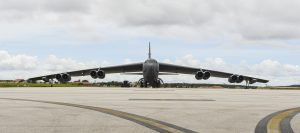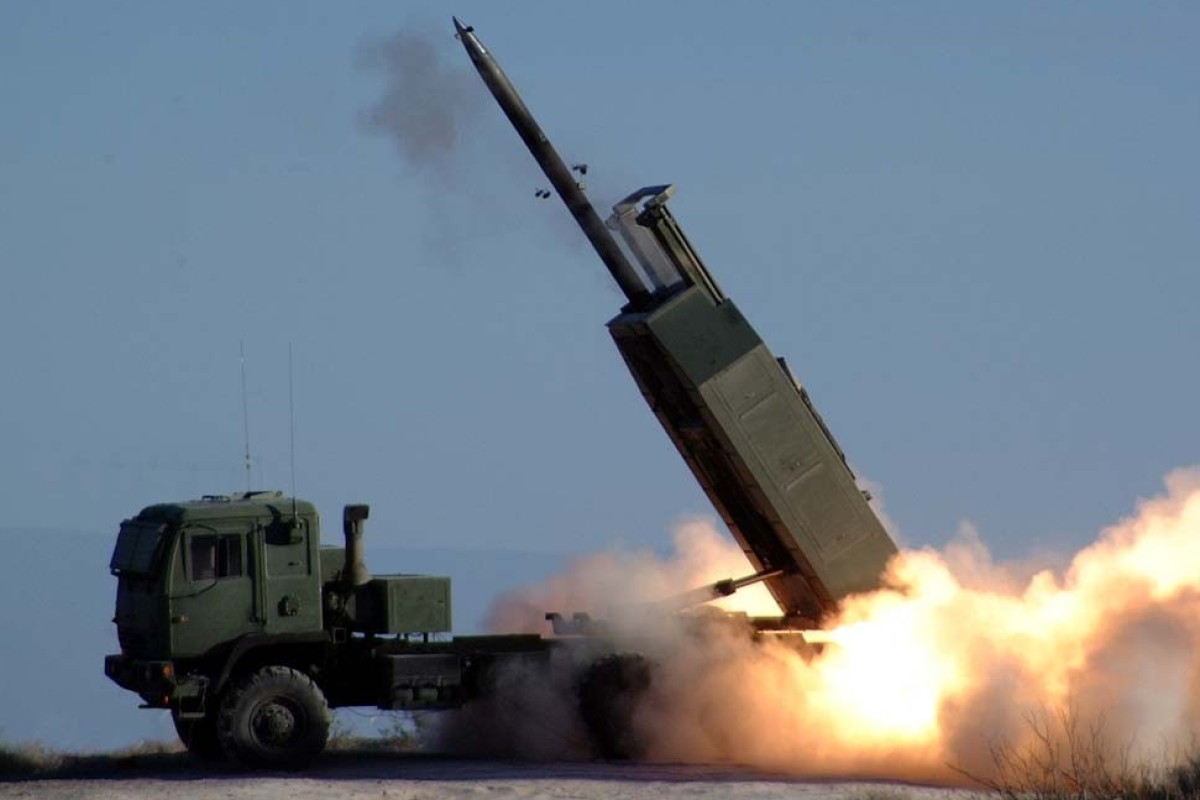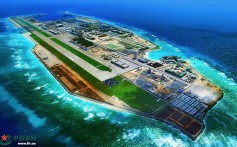Philippines announces plan to back out of US military defense alliance after 2 decades
Philippine spokesman denies White House claim that human rights was briefly discussed; chief White House correspondent John Roberts reports from Manila.
The Philippines notified the United States on Tuesday it would end a major security pact allowing American forces to train in the country – a pivotal move under President Rodrigo Duterte, who threatened to pull out of the agreement after his key ally's U.S. visa was terminated.
Foreign Secretary Teodoro Locsin announced on Twitter that he notified the U.S. Embassy in Manila that the Philippines is pulling out of the 1998 Visiting Forces Agreement (VFA). The accord allows American forces, along with U.S. military ships and aircraft, to rotate through Philippine military bases for roughly 300 joint exercises annually with Filipino troops.“The Deputy Chief of Mission of the Embassy of the United States has received the notice of termination of the Visiting Forces Agreement,” Locsin tweeted. “As a diplomatic courtesy, there will be no further factual announcements following this self-explanatory development.”
@DFAPHL The Deputy Chief of Mission of the Embassy of the United States has received the notice of termination of the Visiting Forces Agreement. As a diplomatic courtesy there will be no further factual announcements following this self-explanatory development. https://twitter.com/dododulay/status/1227085202683396102 …
The agreement will be terminated in 180 days unless both sides can negotiate a way to keep it. The U.S. Embassy in Manila acknowledged receipt of Manila’s notice and said Washington “will carefully consider how best to move forward to advance our shared interests.”

Feb. 10, 2020: Philippine President Rodrigo Duterte delivers a speech during the 11th Biennial National Convention and 22nd founding anniversary of the Chinese Filipino Business Club, Inc. in Manila, Philippines. (Toto Lozano/Malacanang Presidential Photographers Division via AP)
“This is a serious step with significant implications for the U.S.-Philippines alliance,” the embassy said in a statement. “Our two countries enjoy a warm relationship, deeply rooted in history. We remain committed to the friendship between our two peoples.”
Defense Secretary Mark Esper called the move “unfortunate,” adding, “I do think it would be a move in the wrong direction.” Both sides would have six months to come to a resolution before the agreement’s official end.
The U.S. is a longtime treaty ally, a major trading partner and the largest development aid provider to the Philippines.
Despite a 69-year alliance between the two nations, solidified by the 1951 Mutual Defense Treaty, President Duterte has lashed out against Washington in the past, specifically after the U.S. visa of ally Sen. Ronald dela Rosa was reportedly canceled over alleged human rights violations committed as national police chief.
After Duterte took office in 2016, dela Rosa enforced the president’s deadly anti-drug crackdown, carrying out a bloody campaign that reportedly killed thousands of mostly poor Filipinos, The Associated Press reported. Duterte threatened to terminate the security agreement after the visa cancellation and gave Washington a month to restore it. U.S. officials have not publicly reacted to the Philippine leader's demand.
In a speech Monday, Duterte said President Trump moved to save the agreement but added he rejected the idea. He accused the U.S. of meddling in Philippine affairs, including seeking the release of opposition Sen. Leila de Lima, whom he has accused of involvement in illegal drugs. She has dismissed the allegation as a fabricated charge meant to muzzle dissent.
“America is very rude. They are so rude,” Duterte said.
Aside from threatening to end the VFA, Duterte has said he will ban some critical U.S. senators from entering the Philippines.
Duterte has also barred Cabinet officials from traveling to the U.S. and turned down an invitation by Trump to join a special meeting the U.S. leader will host for leaders of the Association of Southeast Asian Nations in March in Las Vegas.
U.S. Assistant Secretary of State for Political-Military Affairs R. Clarke Cooper told reporters Monday that VFA is crucial in implementing a separate Obama-era defense pact. The 2014 Enhanced Defense Cooperation Agreement (EDCA) allows the extended stay of U.S. forces, authorizing them to build and maintain barracks and warehouses and store defense equipment and weapons inside five designated Philippine military camps.
“All the engagements, all the freedom of navigation operations, all the exercises, all the joint training, having US military personnel in port, on the ground, on the flight line, does require that we have a mechanism that allows that, and that’s why the VFA is so important,” Cooper said in a teleconference with reporters on Monday.
Speaking before the Philippines Senate last week, Locsin proposed amending VFA, instead of scrapping it, arguing its termination would affect the joint exercises and other activities with U.S. forces “which the Philippine military and law enforcement agencies need to enhance their capabilities in countering threats to national security.”
The U.S. provided more than $550 million in security assistance to the Philippines from 2016 to 2019, Locsin said, adding that there may be a “chilling effect on our economic relations” if the Philippines draws down its security alliance with Washington.
American forces have provided intelligence, training and aid that allowed the Philippines to deal with human trafficking, cyberattacks, illegal narcotics and terrorism, Locsin said, citing how U.S. military assistance helped Filipino forces quell a disastrous siege by Islamic State group-aligned militants in southern Marawi city in 2017.
Duterte first threatened to abrogate the VFA in late 2016 after a U.S. aid agency put on hold funds for anti-poverty projects in the Philippines. He has walked back on such threats but his government’s action on Tuesday is the most serious indication of his intent to set back military ties with the U.S.
If U.S. Forces Have To Leave The Philippines, Then What?
The Philippines began the process of terminating its Visiting Forces Agreement (VFA) with the United States in mid-February. In place since 1998, the VFA grants legal status to U.S. forces who are in the Philippines temporarily for exercises, humanitarian assistance and disaster relief, and other contingencies. This legal status, similar to the Status of Forces Agreements (SOFA) with Japan and South Korea, enables a predictable, dependable, and cooperative relationship between the Philippines and the United States, and also allows for the rapid execution of our responsibilities under the Mutual Defense Treaty (MDT).
Without the legal protection granted by the VFA, U.S. forces sent to exercise with their Filipino counterparts or respond after a humanitarian emergency would face complicated and time-consuming processes to secure visas for personnel and access to bases and ports for equipment. Indeed, it was the VFA that enabled U.S. forces to respond faster than other nations after Super typhoon Yolanda in 2013.
The United States and the Philippines have 180 days to negotiate a new VFA. If, on day 181, there is no new VFA in place, its absence would neither automatically invalidate the MDT nor force the United States to pull out all service personnel and equipment in-country on rotation. However, it would place those personnel in legal limbo (and under Filipino jurisdiction in the event of a criminal incident) and make it that much harder for the United States to respond quickly in a crisis, both of which directly threaten the viability of the MDT. In this way, the VFA is a crucial piece of the U.S. ability to deter adversaries and reassure friends. The United States has a lot at stake in maintaining access to the Philippines.
At times when this access is in doubt, it is worth reviewing the impact of its loss. If, hypothetically, the loss of the VFA begins a chain reaction that, encouraged by Chinese pressure, ends with the dissolution of the MDT, the expulsion of U.S. forces, and denial of future access, what would that mean for U.S. operations? In essence, the loss of Filipino bases pushes the operational and logistical burden to four other main operating locations—South Korea, Japan (the mainland and Okinawa), Australia, and Guam. As a result, the size, speed, and character of forces deployed for conflicts related to the South China Sea and Taiwan would change, for two main reasons—one political, and one logistical.
Mutual Defense Treaties Do Not Guarantee Unfettered Access
A Mutual Defense Treaty is not a guarantor of operational access for any conflict that arises. Depending on the specifics of the conflict, the United States could face pressure from Seoul, Tokyo, or Canberra to not use their territory to launch military operations for a fight that they would not themselves get involved in.
This may cause particular complications for conflicts related to Taiwan. No major Indo-Pacific country recognizes Taiwan; some, like Australia, adhere to their own “one China” policy, which generally means that they “do not recognize Taiwan as a country,” but “maintain unofficial contacts with Taiwan promoting economic, trade and cultural interests.” All countries have strong economic ties to China, and therefore have a lot to lose. It is by no means guaranteed that Australia, Japan, or South Korea would allow U.S. bases on their territory prevent a Chinese invasion of Taiwan.
Operating rights could be more fluid, and therefore unpredictable, regarding the South China Sea. For South Korea, the occupant of the Blue House at the time of the conflict would matter. Previous liberal administrations, like that of progressive Roh Moo-hyun, have been comparatively cool on the U.S.-South Korea alliance, opting to keep it so long as the United States does not demand political or military support. By contrast, Moon Jae-in has been more willing to lean into the alliance in order to enable greater capacity for South China Sea operations. Regardless of the party in power, a constant consideration would be South Korea’s relationship with, and willingness to antagonize, China. South Koreans still remember China’s anger over the decision to allow the United States to deploy the Terminal High Altitude Area Defense (THAAD) missile system.
For Japan, the reasons behind the conflict—and how the United States would plan to use its basing access—would be driving factors. Japan puts great stake in the language of “prior consultation” embedded in the “Exchange of Notes” between then-Prime Minister Nobusuke Kishi and then-Secretary of State Christian Herter who negotiated the Mutual Defense Treaty in 1960. According to the language, “Major changes in the deployment into Japan of U.S. Armed Forces, major changes in their equipment, and the use of facilities and areas in Japan as bases for military combat operations to be undertaken from Japan other than those conducted under article V of said treaty, shall be subjects of prior consultation with the Government of Japan.” If the conflict were to be seen as a referendum on China’s claims on disputed territory, then Japan might allow U.S. forces to operate as a means to secure its own claims on the Senkakus. However, a less hawkish prime minister might deny, or at least downgrade, U.S. operational capabilities.
Both Japan and South Korea have a coordination mechanism baked into their treaties with the United States that says, in essence, the governments must agree to the “specific facilities and areas” to be used by the U.S. military during a conflict. Depending on the situation, both countries have the ability to restrict U.S. operational access to a subset of locations.
For Australia’s part, although it does care about the South China Sea, it also is well aware that its alliance with the United States presents an “abandonment vs. entrapment” dilemma: eschew supporting an ally in a fight and risk losing them, or support an ally and risk being stuck fighting an unwanted war. For this and other reasons, Australia has sought peaceful resolutions when tensions have erupted in the South China Sea.
Therefore, losing access to the Philippines increases U.S. vulnerability to the domestic politics and foreign policies of its other treaty allies. Even if those allies do grant the United States some kind of operational access, there may still be serious operational impacts if a conflict erupts.
Stretched Supply Lines to the South China Sea
Without the Philippines, U.S. forces would be faced with a series of math and physics problems from fighting from much further away.
The closest military facilities to the South China Sea are in Okinawa (approximately 1,000 miles), South Korea (1,600 miles), mainland Japan (2,000 miles), Guam (2,000 miles), and Darwin, Australia (2,300 miles). Such distances present a number of logistical and operational complications.
Because their path would largely take them over open ocean, forces flowing from Japan or South Korea would not travel through foreign airspace, allowing for a much straighter and faster course. However, they would be coming from—and moving through—areas well within the range of a sizeable Chinese missile quiver. To reduce that vulnerability, operational planners might be forced to move the bulk of these units to Guam and Australia.
Such great distances produce a heavier logistical burden, especially for the Air Force. Fighter jets would need to be refueled en route more often, giving hostile forces two prime targets rather than one. The Philippines and Indonesia also might deny U.S. forces access to their airspace, making the route even more circuitous.
More time spent aloft also means planners would run into crew rest restrictions. Assuming a flying speed of Mach 1.6, an F-35 pilot flying a sortie from Darwin to the South China Sea would spend a minimum of four hours in transit round trip, plus the duration of the sortie. Afterward, that pilot would be out of the fight for at least 10 hours on mandatory rest. Depending on the number of pilots available to fly and the operational tempo, ten hours can be a long time.
Beyond using Philippine bases as a forward operating location, these bases allow U.S. forces to preposition resupply materials close to the fight. Okinawa houses critical resupply materials, such as fuel and munitions for the Army and Air Force, but 1,000 miles is a long way when you’re in need.
Logistical Bottlenecks Surround Taiwan
If Taiwan is the area of operations, some U.S. military facilities are much closer—but come with serious complications. Okinawa and mainland Japan are just 450 miles away; South Korea and Guam are 1,300 miles and 1,700 miles away, respectively. (Darwin, at 2,300 miles away is a less-viable operational hub.) Assuming the bulk of forces come from and through Japan and South Korea by virtue of proximity, a logistical bottleneck for all reception, staging, onward movement, and integration (RSOI) could arise.
The finite number of airfields, ports, and roads, and the rules and regulations surrounding their use, presents a logistical challenge. For example, to move large, heavy vehicles on mainland Japan’s roads, the U.S. military needs to request permission 45 days in advance and include proposed routes, the size and weight of each vehicle, and the specific map to be used. Permission is then granted not by the Ministry of Defense, but by the Ministry of Land, Infrastructure, Transport, and Tourism. In Okinawa, the Okinawan General Bureau adjudicates such requests at least 10 days in advance. Similar restrictions exist in South Korea.
While these restrictions could change during wartime, they would slow down U.S. force preparations before combat operations begin.
Time and Distance are an Enemy
If the United States were to lose access to bases in the Philippines, the effects will ripple outward. With fewer options available, even simply for staging and prepositioning, heavier loads will wind up elsewhere. And yet that may be unacceptable for diplomatic or logistical reasons.
In the worst-case scenario, in which U.S. forces have to flow from the United States to a conflict in the Indo-Pacific region, time and distance would be as great an enemy as the adversary itself. Assuming a speed of 22 knots, a ship like the LHA 6, home-ported in San Diego, would take nine days to get to Tokyo, 12 days to get to Taiwan, and 13 days to get to the South China Sea. This is a slow response time to what might be a very rapid conflict. Indeed, it is dangerous to assume that the United States will have an unambiguous and timely warning of any conflict in the region.
In sum, then: Does the loss of the VFA fundamentally degrade U.S. operations in the region? No. But, could it be the first step towards that end result? Yes. This is why ensuring a U.S. soldier can train her counterpart in Manila without a visa also ensures she can also come to the defense of a U.S. treaty ally. Maintaining these alliances in the Indo-Pacific in all their manifestations is critical—and the details matter.
The views expressed in this article are those of the author alone and do not necessarily reflect the position of the Foreign Policy Research Institute, a non-partisan organization that seeks to publish well-argued, policy-oriented articles on American foreign policy and national security priorities.






